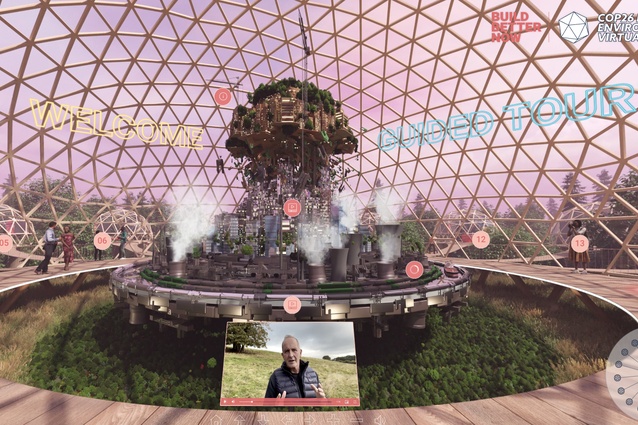Editorial: Chris Barton on no more blah, blah, blah
One tries, with increasingly unruly hair, to remain hopeful. Auckland has moved to Covid Alert Level 3.2 (lockdown with bigger picnics and shopping). A daily visit to stare at the Ministry of Health vaccinations data updates is strangely therapeutic.
Watching the second week of the 26th Conference of the Parties (COP26), aka the UN Climate Change Conference in Glasgow, hope is harder to find. The clichés don’t help: “a critical juncture for humanity” says Royal Institute of British Architects (RIBA) president Simon Allford. The same sentiment – “This is the critical moment for humanity” – is the overriding message of Burning, Eva Orner’s new documentary about Australia’s devastating Black Summer bushfires, which convincingly lays the disaster on Scott Morrison’s government (and preceding governments) for refusing to address the underlying existential threat. Then again, you have to say our government and preceding governments have mostly ignored that underlying threat, too; last year, New Zealand topped up its domestic coal production with a million tonnes of low-grade, high-emissions, sub-bituminous coal imported from Indonesia to keep the lights on in our homes and businesses.
Calls to action rather than, as Greta Thunberg put it, more “blah, blah, blah” are everywhere. Prince Charles told world leaders in Rome: “Quite literally, it is the last-chance saloon. We must now translate fine words into still finer actions.” Sir David Attenborough pleaded for attendees to see the opportunity: “We need to rewrite our story to turn this tragedy into a triumph.”
There were also plenty of messages by architects expressing concerns that the built environment’s part in the crisis is not being talked about enough. Greater action is needed, they say, to acknowledge the embodied carbon footprint of buildings derived from material sourcing and construction. And there’s an urgent need to embed embodied carbon in sustainability standards and building regulations. There were calls, too, for more architects to think more about circularity in their work, keeping both buildings and their materials in use as long as possible, minimising the waste and pollution of construction and demolition.
Rays of hope emanated from the COP26 ‘Build Better Now’ virtual pavilion, showcasing 17 “exemplary sustainable projects” and explaining the ways in which construction has contributed to climate change and how future buildings could be less carbon intensive.
The pavilion includes Kāinga Ora’s Ngā Kāinga Anamata, ‘Homes of the Future’, a net-zero-energy social housing pilot comprising 40 dwellings in Glendowie, Auckland, starting construction in 2022. The pilot is designed by Context Architects in collaboration with Aurecon and other consultants. The core focus is to influence change by achieving the government’s 2030 carbon emission targets by 2024 and lead the way in advancing whole-building life-cycle carbon assessments. Key features include Passive House Certification, a rooftop photovoltaic array, and the use of cross-laminated timber (CLT) to reduce embodied carbon emissions massively.
By vowing to deliver six years early on our 2030 carbon emissions targets, Ngā Kāinga Anamata highlights the urgency for architects to act now, largely because building takes time. A large timber build designed today will probably take at least three years to be completed. As one architect put it to me recently, with emissions targets looming, “we each have to be carbon better and be it right now”.
So it’s heartening to see so many projects in this year’s NZIA Awards doing just that. Many tout high Green Star ratings and other sustainability features that are always part of the architect’s stock-in-trade. Some project processes cry out for more information. On the face of it, the recovery of the Christchurch Town Hall must rate highly on the circularity front of keeping both buildings and their materials in use as long as possible. But I’d love to know just how much concrete, with its attendant emissions, was pumped into the new foundations to stabilise the building’s liquefied ground.
I also reckon there are at least three projects which deserve special mention. Call them the “No More Blah, Blah, Blah, Doing it Right Now for the Planet” Awards. They are:
- Threepwood House, for being Passive House Plus with an 8 Homestar rating
- Gisborne Airport, for complying with rigorous Living Building Challenge requirements.
- SCION Innovation Hub, for being the first building in New Zealand to achieve certified net-zero embodied carbon emissions.
Next year, I’m sure we’ll see a much longer list. Being carbon better now.










